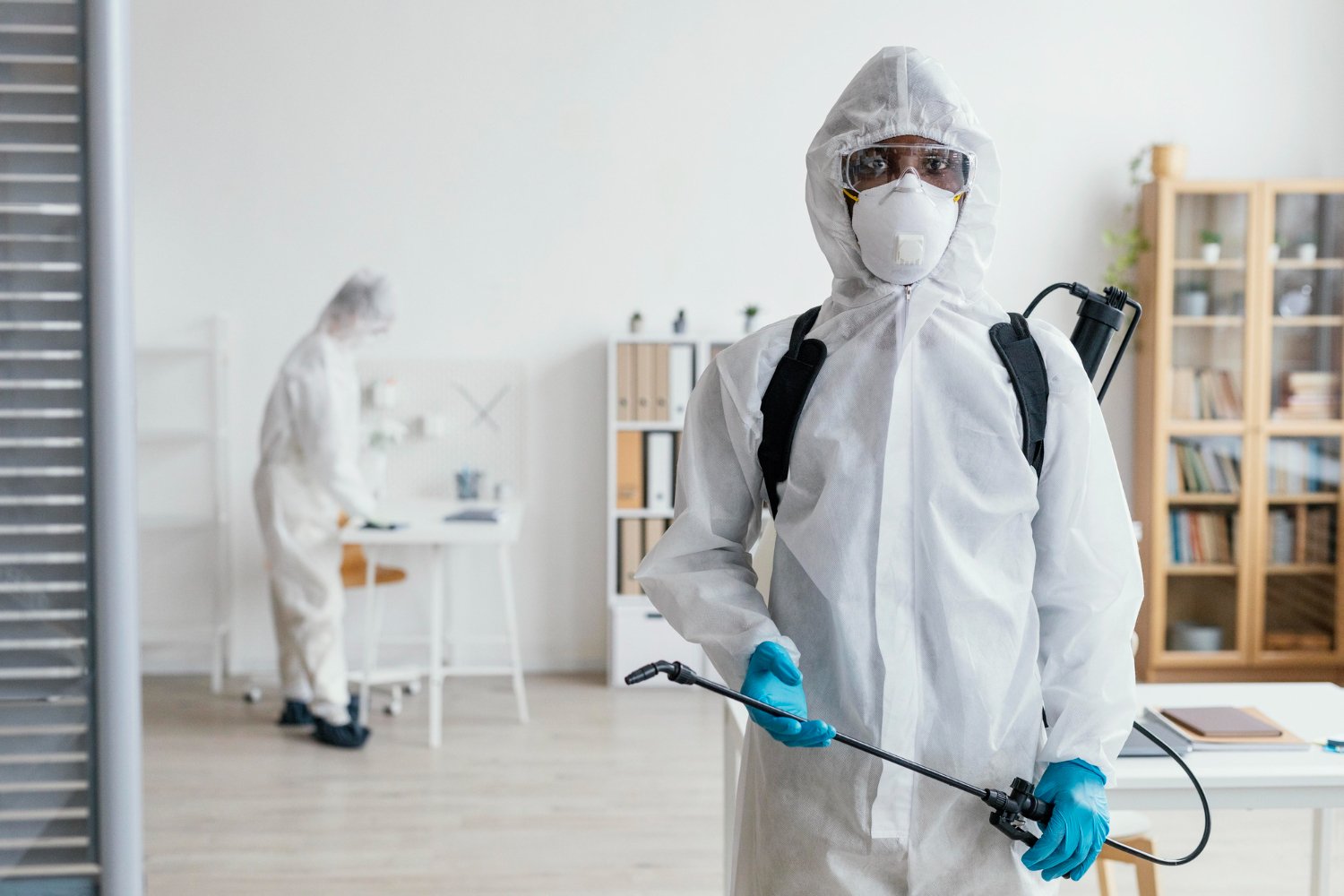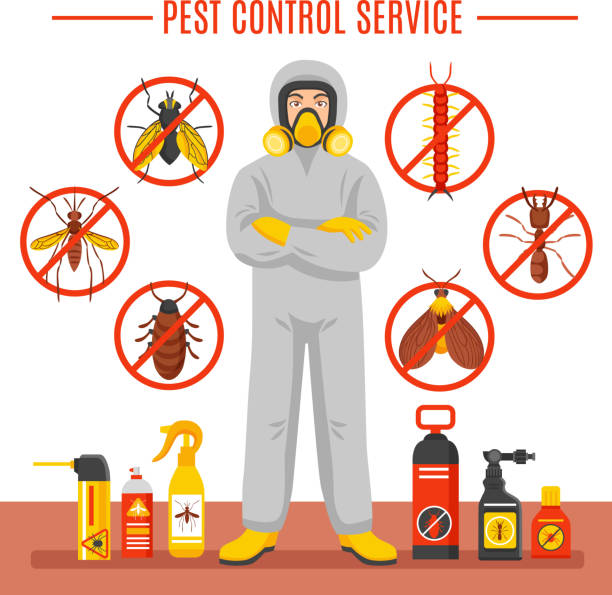Reliable Solutions for Pest Problems from Pest Control Lockhart
Reliable Solutions for Pest Problems from Pest Control Lockhart
Blog Article
Discovering Infestation and Therapy Methods on the planet of Parasite Control
The landscape of insect control includes a myriad of challenges, particularly as problems of common house bugs remain to advance. Understanding the habits and reproductive patterns of these hassles is critical for developing efficient therapy approaches. By integrating safety nets with advanced monitoring methods, such as Integrated Pest Administration (IPM), property owners can much better secure their environments. However, the effectiveness of these techniques might differ significantly based upon certain situations. What underlying variables add to the success or failing of these methods in various settings?

Usual Home Vermin
When it involves handling our living spaces, recognizing common house bugs is essential. These insects not just disrupt our convenience however can likewise posture health and wellness threats and damages property. The most prevalent house insects consist of ants, cockroaches, rodents, termites, and bed bugs.
Ants, frequently seen foraging in cooking areas, can contaminate food and develop big colonies. Rats, including computer mice and rats, can create architectural damage and bring conditions like hantavirus and salmonella.
Acknowledging the indicators of these pests, such as droppings, nests, or bite marks, is crucial for very early intervention (Pest Control Lockhart). Proper hygiene methods, sealing access factors, and maintaining a clutter-free atmosphere work preventative measures. By determining these typical household bugs and comprehending their habits, house owners can take positive steps to mitigate problems, guaranteeing a much healthier living environment
Comprehending Parasite Infestations
Pest problems can intensify swiftly, turning a small annoyance right into a significant problem if not attended to promptly. Understanding the nature of these infestations is critical for reliable management. Bugs can attack property and industrial spaces for various reasons, including the search for food, sanctuary, or breeding grounds. Typical elements adding to problems consist of inadequate cleanliness, architectural vulnerabilities, and seasonal changes that drive pests inside.
Recognizing the kind of parasite is necessary, as various varieties display diverse habits and reproductive rates. Rodents may establish nests in surprise locations while pests like roaches flourish in wet settings. Early discovery typically rests on acknowledging indicators such as droppings, munch marks, or uncommon audios, which can indicate an issue before it comes to be extreme.
Environmental conditions additionally play an important function in insect proliferation. Warm, humid climates can promote the rapid growth of pest populations, while changes in landscape design or building can unintentionally create favorable settings. Normal inspections and preventative steps are vital to alleviating the risk of invasions. An informed approach to comprehending these dynamics lays the groundwork for reliable pest administration strategies in the future.
Treatment Approaches and Methods
Efficient therapy techniques and strategies are important for alleviating pest infestations and bring back a safe environment. A diverse strategy is usually best, incorporating chemical, organic, and mechanical methods customized to the particular bug and the extent of the invasion.
Chemical therapies consist of making use of pesticides and herbicides, which can efficiently eliminate insects. Correct application and adherence to safety and security standards are vital to decrease risks to people and non-target microorganisms. Integrated Pest Management (IPM) encourages the wise use of chemicals as a last resource, relying rather on surveillance and threshold levels to establish treatment needs.
Organic control methods include presenting all-natural killers or bloodsuckers to minimize parasite populations. This approach is progressively preferred, especially my response in farming settings, as it advertises environmental sustainability.
Mechanical methods, such as catches and barriers, give prompt relief from parasites without introducing chemicals. Choices include sticky traps for pests or physical obstacles for rats.
Ultimately, the selection of therapy approach need to take into consideration the certain bug, the setting, and prospective effect on human health and wellness and environments. A well balanced mix of these methods can properly manage invasions while advertising lasting pest control services.
Safety Nets for Residence
Proactively resolving bug problems before they rise is vital for keeping a healthy home setting (Pest Control Lockhart). Applying reliable precautionary measures see page can significantly minimize the possibility of problems, ultimately securing both your residential or commercial property and well-being

Appropriate landscape design additionally plays an essential function in avoidance. Keeping shrubs and trees cut away from the residence minimizes the opportunities of bugs locating their means inside. Moreover, guarantee that drain systems are working efficiently to stop standing water, which can attract in mosquitoes and other pests.
Last but not least, routine assessments are advisable. Consistently examining for indications of pest task enables early intervention. By embracing these safety nets, home owners can develop a setting that is less welcoming to insects, therefore improving their total lifestyle and reducing the requirement for substantial parasite control treatments.
Business Pest Control Strategies
A thorough approach to business bug control is important for companies aiming to maintain a risk-free and hygienic setting. Reliable approaches entail a mix of regular inspections, staff member training, and the execution of Integrated Parasite Management (IPM) practices.
Regular assessments enable early discovery of insect task, permitting timely treatment. Companies need to develop a regular timetable for these assessments, concentrating find on high-risk areas such as kitchen areas, storage spaces, and garbage disposal sites. Staff member training is just as crucial; staff ought to be educated on the indications of pest invasions and the significance of reporting them right away.
Implementing IPM techniques helps alleviate pest concerns sustainably. This includes environment modification, such as sealing entrance points and decreasing clutter, as well as employing natural deterrents prior to resorting to chemical treatments.

In addition, teaming up with a certified parasite control service provider ensures access to specialist expertise and advanced therapy choices. This collaboration can bring about personalized pest control prepares tailored to the particular needs of the business, reducing threats and boosting total effectiveness. Eventually, a positive and informed method promotes a pest-free environment, protecting both public health and company reputation.
Conclusion
In final thought, effective insect control demands an extensive understanding of typical home insects and their habits, combined with targeted therapy techniques. Carrying out preventive actions together with therapy methods such as Integrated Pest Management and biological control boosts the capacity to reduce problems.
Report this page